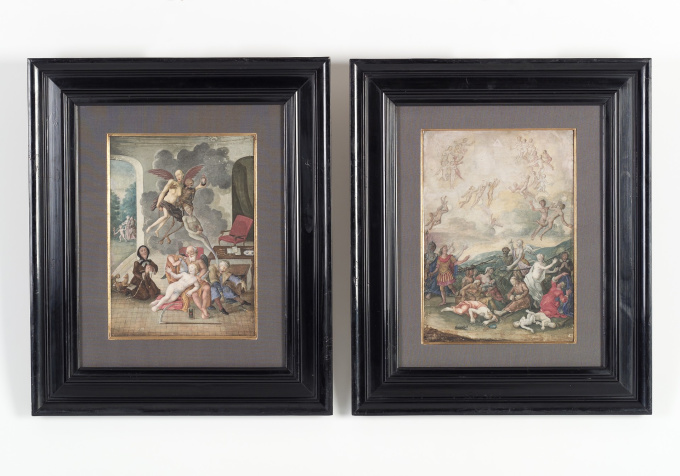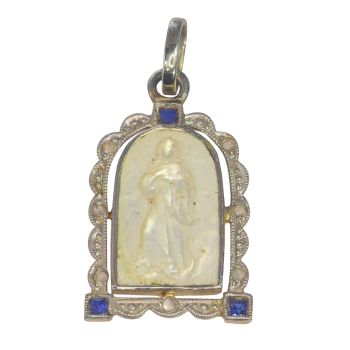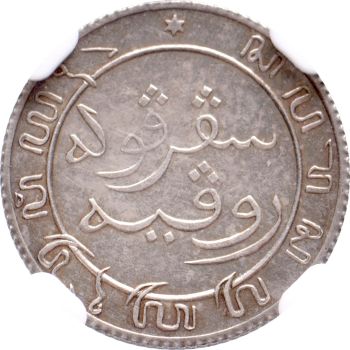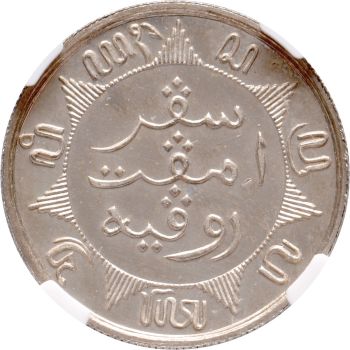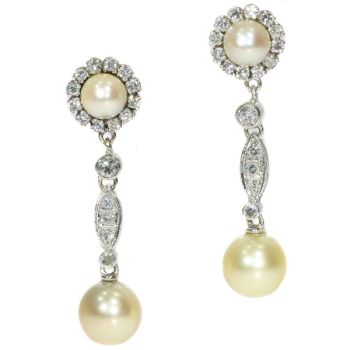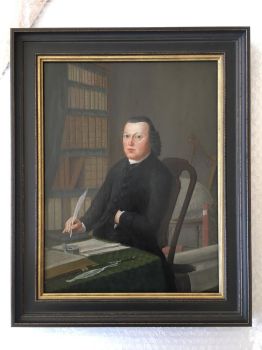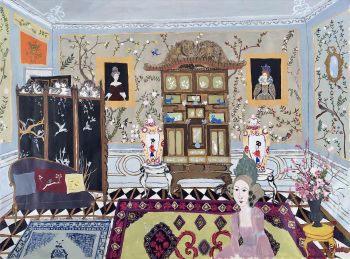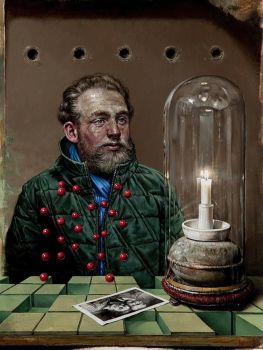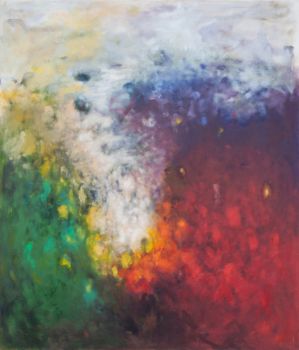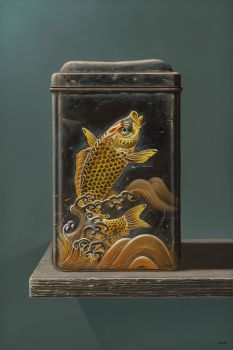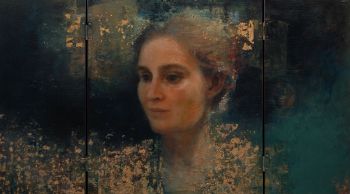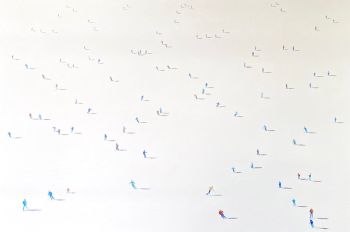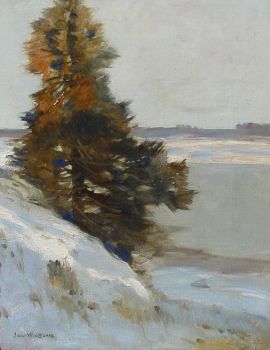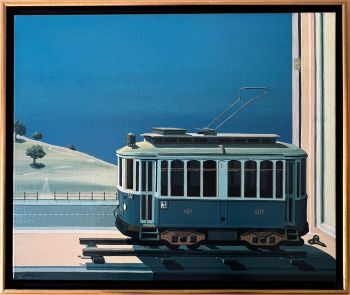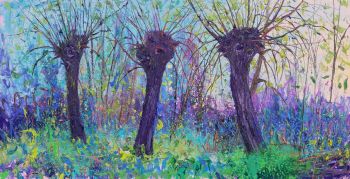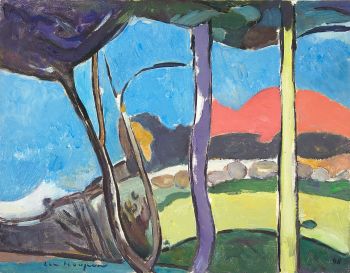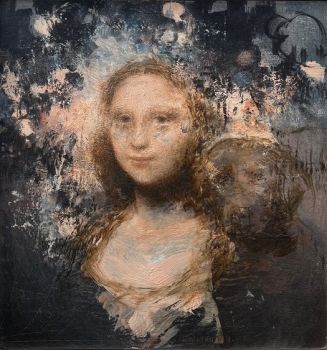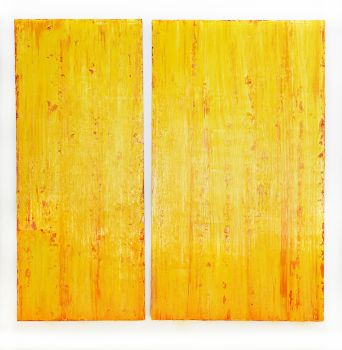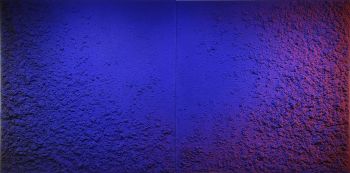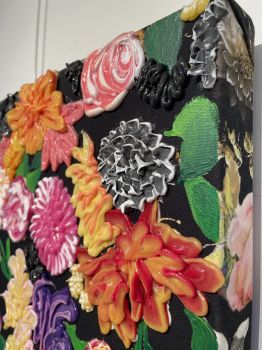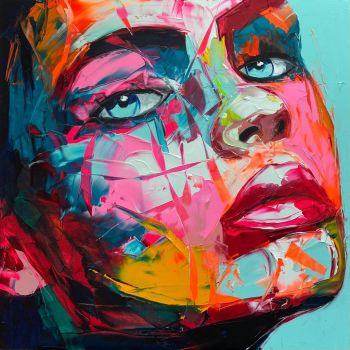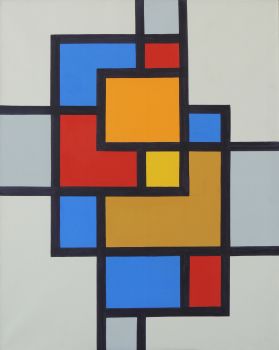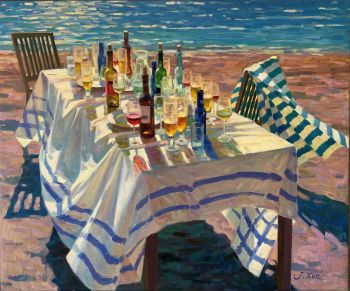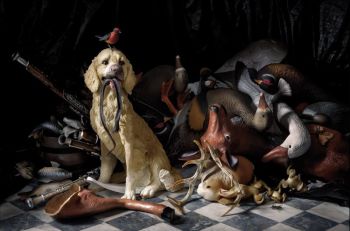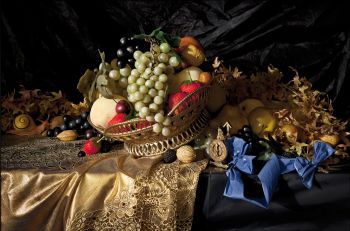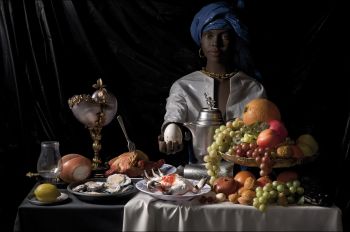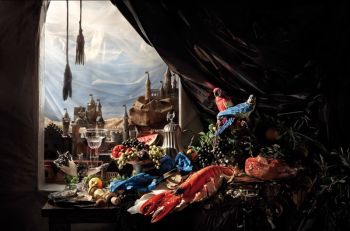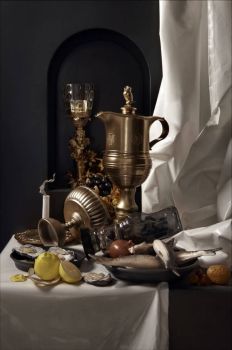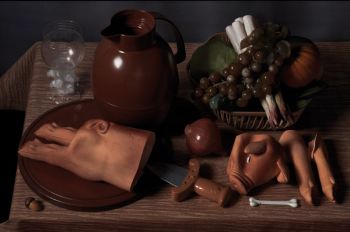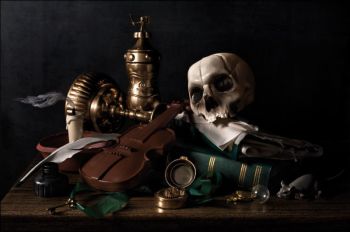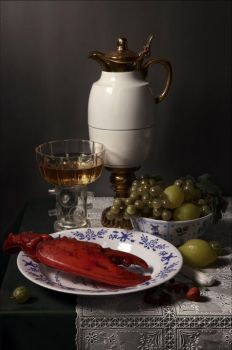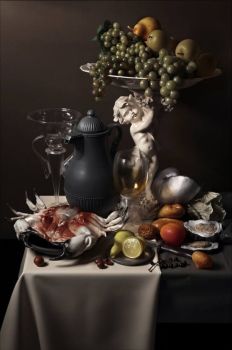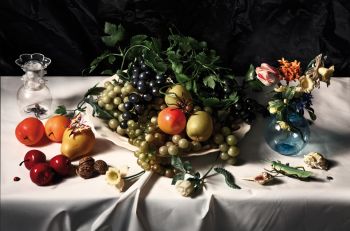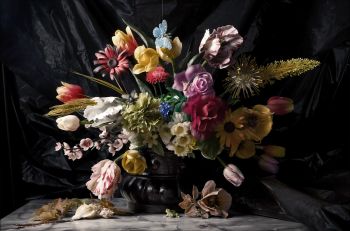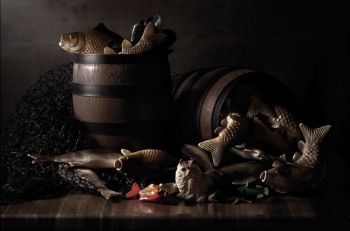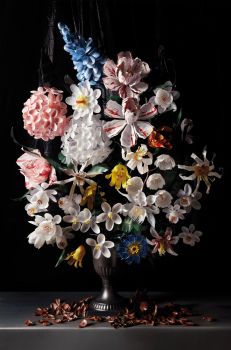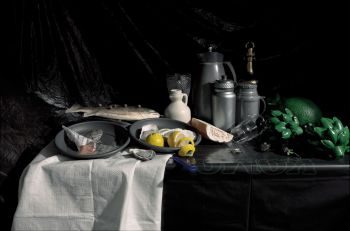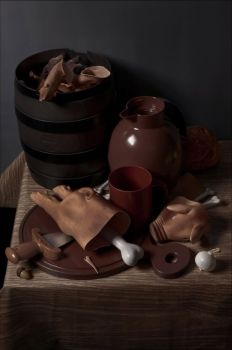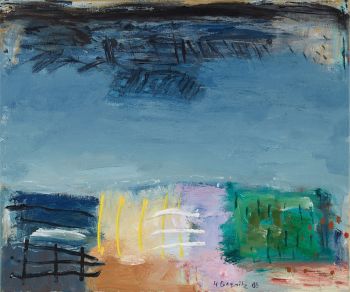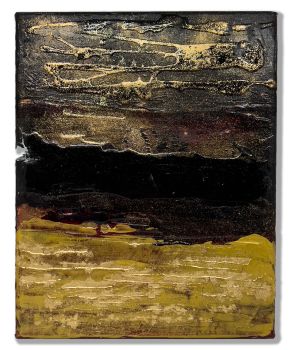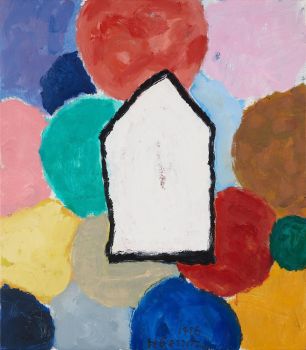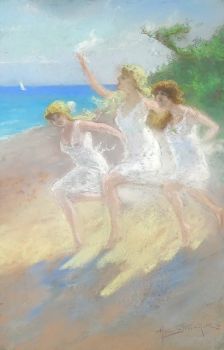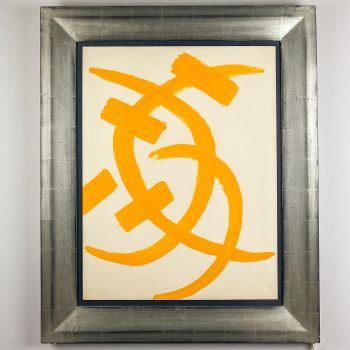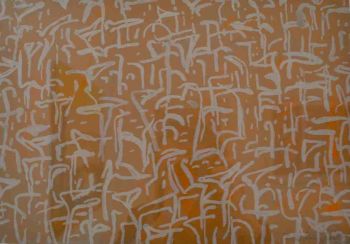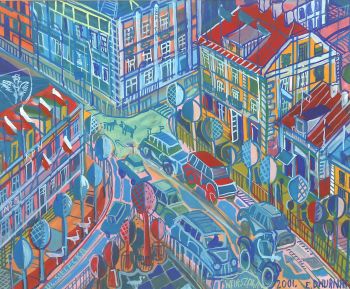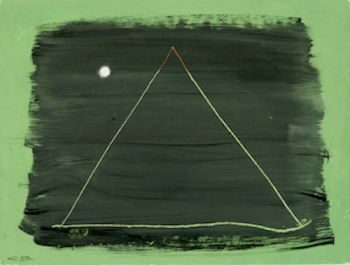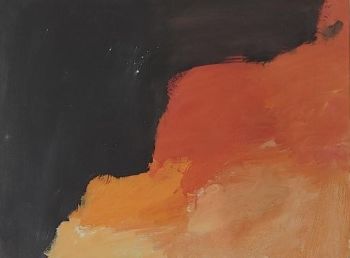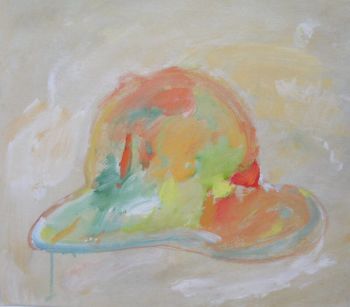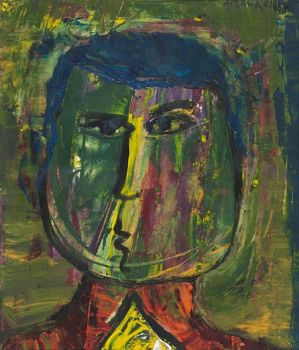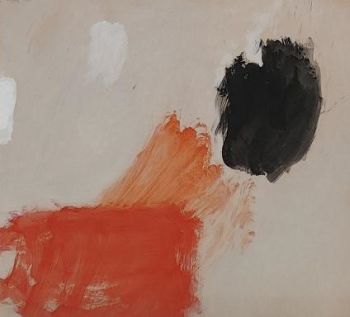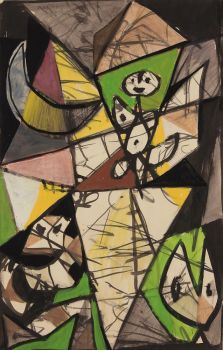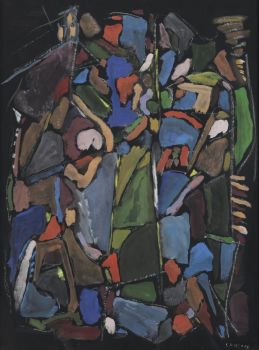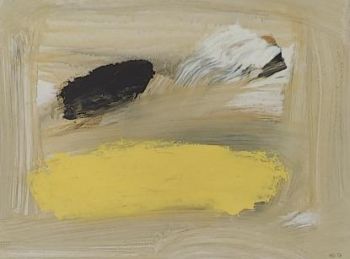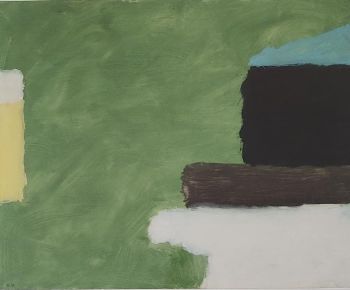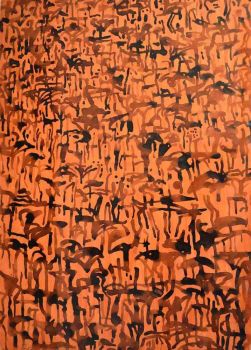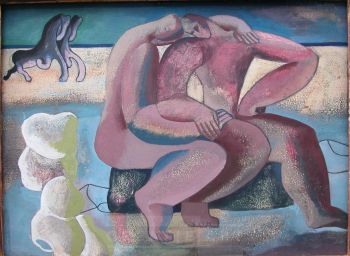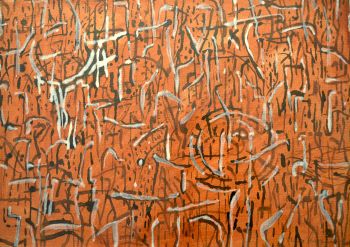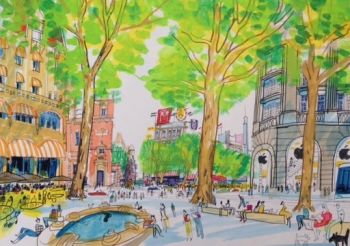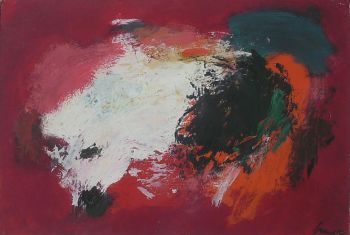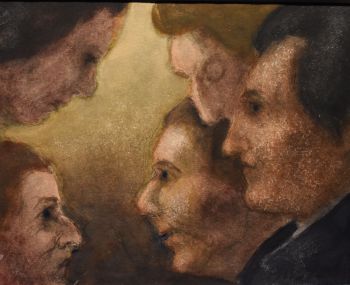Two German Gouache Paintings 1720 - 1730
Unbekannter Künstler
GouachePapierAquarellFarbe
50 ⨯ 42 cm
Derzeit nicht über Gallerease verfügbar
- Über KunstwerkTwo pictures with a rare Vanitas scene.
Father Time accompanied by Death.
In a chair in the foreground sits a winged Father Time clipping th wings of Life. In front of Time we see an hourglass and a scythe. These are both attributes of Time as is the pair of scissors with which the wings of life are pinioned.
On Time’s right hand we see a man leaned to a stool with a bandage round his head whom’s spirit is escaping through his mouth. Death is literally dragging of the spirit by its hair. Between the legs of the man we see an opened moneybag. On the left of Father Time a kneeling and lamenting woman accompanied by a monkey and a dog that reads a book.
Hovering over this scene we see Death that drags of an old woman with a pearl necklace and a portrait medallion, together with te soul of the dying man.
On the right a table with an inkwell, papers and a written text. On the left in the landscape outside a pair accompanied by a winged boy with a torch.
This unusual representation was almost certainly meant to commemorate the human mortality. Father Time with his many attributes and the grinning Death speak for themselves. The dog usually stands for faithfulness and the monkey for lasciviousness. Here it is can reasonably be assumed that the stand for the human arrogations of foolishness and vanity because they are depicted as impersonations of human beings. The text on the table might refer to the account of the deceased’s life.
The Trapnet of Death
This representiation is undoubtedly an allusion of the Last Judgement, although the separation of souls is depicted in a unique style.
Death, with his head and scythe decorated with flowers, seduces people to stay on his side of the trapnet. Behind him stands a winged figure that beckons the people towards the light.
Before the net in the foreground we see money pouches, gems and a man wearing a crown, all symbols of power and the richess of the world. Possibly the flowers that Death is adorned with refer to the transience of life and swift decay.
The absence of explicitly Christian symbols is striking in both the representations. Only the winged person in the second picture could be conceived as an angel. Traditionally however, it is God himself who in depictions of the Final Judgement seperates the sheep from the goats, surrounded by the Archangels and Apostles. Here we see none of these symbolizations.
Gouache: a technique with water soluble paint and gum arabic. The difference with watercolor is that the result is heavier and much more opaque . - Über Künstler
Es kann vorkommen, dass ein Künstler oder Hersteller unbekannt ist.
Bei einigen Werken ist nicht zu bestimmen, von wem sie hergestellt wurden, oder sie wurden von (einer Gruppe von) Handwerkern hergestellt. Beispiele sind Statuen aus der Antike, Möbel, Spiegel oder Signaturen, die nicht klar oder lesbar sind, aber auch einige Werke sind überhaupt nicht signiert.
Außerdem finden Sie folgende Beschreibung:
•"Zugeschrieben …." Ihrer Meinung nach wohl zumindest teilweise ein Werk des Künstlers
•„Atelier von ….“ oder „Werkstatt von“ Ihrer Meinung nach eine Arbeit, die im Atelier oder in der Werkstatt des Künstlers, möglicherweise unter seiner Aufsicht, ausgeführt wurde
•„Kreis von ….“ Ihrer Meinung nach ein Werk aus der Zeit des Künstlers, das seinen Einfluss zeigt, eng mit dem Künstler verbunden, aber nicht unbedingt sein Schüler
•"Art von …." oder „Anhänger von ….“ Ihrer Meinung nach eine Arbeit, die im Stil des Künstlers ausgeführt wurde, aber nicht unbedingt von einem Schüler; kann zeitgenössisch oder fast zeitgenössisch sein
•„Art von ….“ Ihrer Meinung nach ein Werk im Stil des Künstlers, aber späteren Datums
•"Nach …." Ihrer Meinung nach eine Kopie (jegliches Datums) eines Werks des Künstlers
• „Unterzeichnet …“, „Datiert …“. oder „Beschriftet“ Ihrer Meinung nach wurde das Werk vom Künstler signiert/datiert/beschriftet. Das Hinzufügen eines Fragezeichens weist auf einen Zweifel hin
• „Mit Unterschrift …“, „Mit Datum …“, „Mit Aufschrift ….“ oder „Trägt Unterschrift/Datum/Beschriftung“ ihrer Meinung nach die Unterschrift/Datum/Beschriftung von jemand anderem als dem Künstler hinzugefügt wurde
Related artworks
- 1 - 4 / 12
Dutch School
Ankunft eines niederländischen Ostindianers in der Table Bay18th century
Preis auf AnfrageZebregs & Röell - Fine Art - Antiques
1 - 4 / 24- 1 - 4 / 24
André Lanskoy
Composition Abstraite (sur fond noir)20th century
Preis auf AnfrageFrans Jacobs Fine Art
1 - 4 / 24

